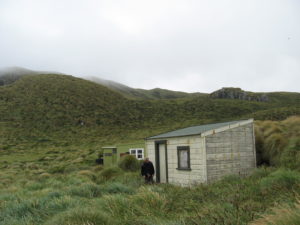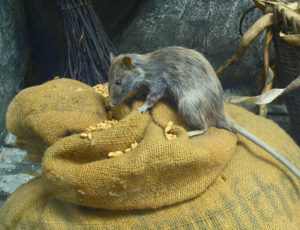Just because you’re not catching anything, doesn’t necessarily mean all predators have been eradicated. Being certain that an area is completely predator-free is a challenge in island eradications where certainty is needed before endangered species can be reintroduced. But the problem also applies to mainland pest operations – how can you be sure you’ve been successful?
In a paper published in the last couple of weeks, James Russell (University of Auckland) et al, tackle the issue of Rapid Eradication Assessment (REA) by modelling various scenarios and determining what degree of monitoring is needed to determine eradication success (or failure).
Full online “early view” access to the research paper is currently available – but access is likely to be restricted by the publisher quite soon, now that the journal is published – so if you’re keen to read the full research, sooner is better than later!
In summary:

Rapid eradication assessment (REA) using statistical models that determine the probability of detecting survivors in a particular situation, can give a more timely answer to whether an eradication is successful – rather than the usual method of waiting two years to see whether any survivors and their offspring appear. Variables such as the grid of detection devices, the biological characteristics of the eradication target (eg. how far they can move) and the method of monitoring (how likely they are to be detected) can all be factored into the model.
REA modelling can provide guidance on the type and degree of monitoring needed to give optimal detection results, without wasting effort by monitoring in more detail than is necessary – or running the risk of not detecting predators because monitoring is insufficient. It can indicate diminishing returns and trade-offs in monitoring to achieve a given level of confidence.
If the eradication is determined to be a success, with a high level of confidence in that assessment, then native species can be reintroduced up to two years earlier than with traditional assessment methods. Alternatively, if rapid eradication assessment reveals that some target animals remain, then the problem is identified earlier and can be fixed more economically. It may be possible to deal with a localised surviving remnant, rather than having to repeat the whole eradication operation as could be the case if the “wait for 2 years and see” assessment approach was used.

The researchers simulated estimation of the probability of eradication for invasive rodents on islands across a range of monitoring parameters and found that: “monitoring an island for survivors over 15–20 nights is optimal and that waiting longer than a year before commencing monitoring has a negligible impact on the estimated probability of success. The spacing between detection devices has a considerable influence on estimated probability of success but only when it is <60 m.”
They recommend REA to managers of island eradication programmes: “Rapid eradication assessment (REA) is a powerful tool for managers to design optimal invasive species eradication monitoring programmes. We recommend island eradication managers routinely implement REA on small islands for the demonstrated cost savings and to accelerate eradication confirmation, ultimately facilitating island restoration.”
Managers of mainland sanctuaries and other mainland eradication projects might also like to investigate the use of the REA app.
The full article is published in the Journal of Applied Ecology and is freely available (for a limited period).
Optimizing confirmation of invasive species eradication with rapid eradication assessment (August 2016)

